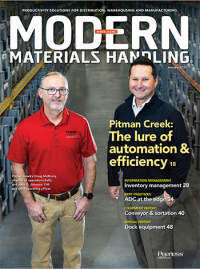The Future of Fixed Conveyor and Sortation
Much has been made about the rise of robotics and the inflexibility of traditional fixed conveyor and sortation. But the fixed future is shaping up just fine, given that goods-to-person robotics and AMRs work often in concert with conveyor or sortation, in addition to the continued usefulness of fixed conveyance and sortation to support high-volume operations.
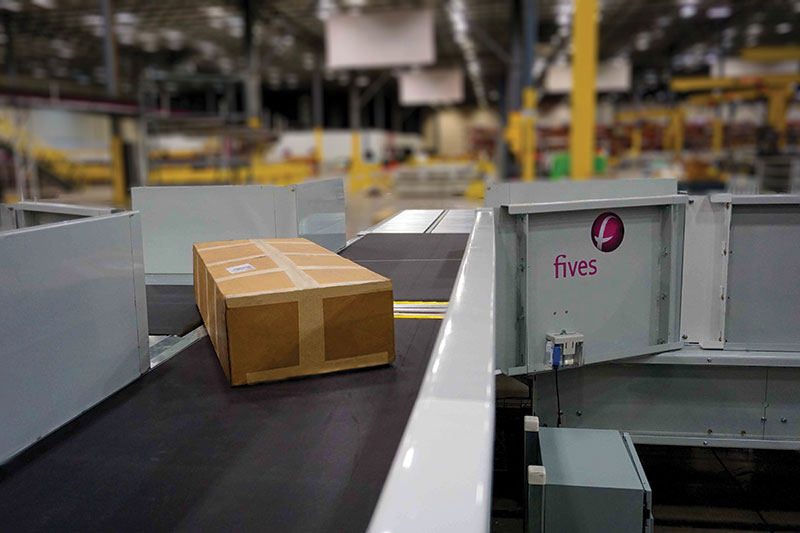
Though fulfillment solutions based on robotics grab much of the focus today, fixed conveyor and sortation is wrapped up in the same market need of finding a blend of systems to support a digital warehouse capable of efficiently filling online orders and hitting service levels.
Conveyor and sortation solutions are adapting to the same omni-channel fulfillment pressures driving the market for autonomous mobile robots (AMRs), and other robotics solutions. Pressures like more each picking, tighter cycle times, small polybags or larger irregular-shaped items that need handling, can be seen as influencing the direction of sortation and conveyor.
Additionally, while AMRs can be used to sort, and certainly to move goods from one point to another, fixed conveyor and sortation is seen as complementary to robotics, in that conveyor typically is used to feed goods and totes into and out of these systems. So, it isn’t a question of choosing one over the other, as it’s a question of finding a good blend of fixed automation and robotics, especially given the increasing use of high-density, robotic goods-to-person (GTP) systems.
In short, conveyor and sortation are evolving to fit the needs of today’s more automated, e-commerce focused DCs, says John Mart, vice president of product management with warehouse automation provider Dematic.
“Some of these facilities were designed at a time when the work was 70% centered on store replenishment and 30% on e-commerce, but now that has actually flipped for some of these operations and the majority of work is now e-commerce,” says Mart. “Having the systems be able to handle the different types of package types and route them to the appropriate automation is an important consideration and has been driving enhancements in sortation to handle those polybags and smaller goods.”
Within GTP solutions, adds Mart, Dematic has been using sound dampening techniques within the supporting fixed automation elements to achieve GTP solutions that run more quietly.
Small changes to conveyor or tote materials, Mart says, lead to a better work environment. “Sound dampening might seem basic, but there’s some things that we’ve been changing in the products over time to reduce the decibel levels from anywhere from 5 to 20 decibels lower than what it’s been in the past, which is an important benefit in these spaces where people have to work all day long.”
Another change with conveyor and sortation is more sequencing, buffering and complexity to materials flow across various zones of automation. Sortation is not just for diverting completed orders to a few outbound shipping docks or one big pre-sort function in front of a single order picking system. Multiple zones of automation may call for conveyance or sortation support, notes Junior Cairns, vice president of engineering with Savoye, a warehouse automation provider.
“There is a lot of growth in what I call sequenced sortation, where you are doing more than sending a lot of product to a few destinations,” says Cairns. “Instead, you may be sorting product into the proper sequencing needed for a specific order fulfillment process. Overall, I think sortation is morphing to do more sequencing of the flow of goods on more of a SKU-by-SKU, item-by-item level. Labor is probably the biggest driver in this. It’s one thing for your systems to be able to go fast, but are you working on the things that you should be working on to meet your customer service levels?”
Product variability
The type of sortation or conveying solution is heavily influenced by the product sizes, shapes, weights and packages that need to be handled, as well as the needed throughput rate. Vendors agree there is greater variability in what needs to be handled as part of e-commerce, with more small polybags, but also larger, odd-shaped items.
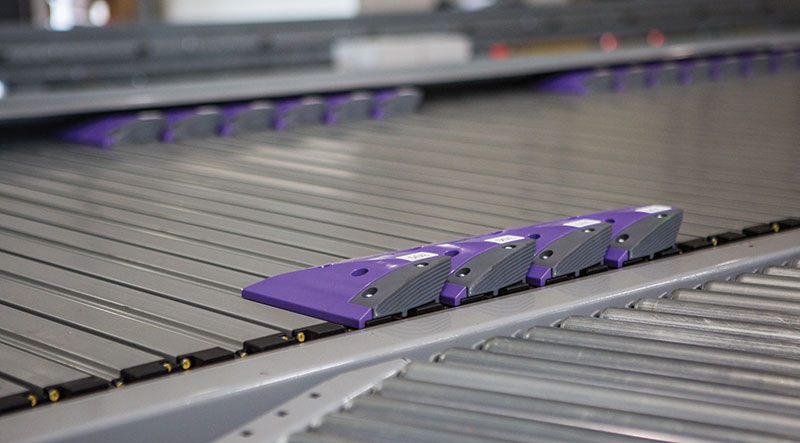
“They’re looking for a lot more range within the products that can be handled through their conveyance and sortation systems,” says Cairns. “But we need to be careful defining what needs to be handled within a system, so we are picking the right technology.”
Package variation is growing on both ends of the size spectrum, notes Jeff Gavenas, senior vice president of sales and marketing for Fives Intralogistics Corp. Beyond polybags, large irregular shaped items like rugs or automotive parts are showing up in a higher proportion in many facilities. When these large irregular items were just 3% or 4% of SKUs being shipped, a manual process could handle them at an acceptable labor cost, but when these larger irregulars get into the low double digits, it becomes desirable to automate, Gavenas explains.
“Our customers increasingly want us to automate the handling of what historically were considered non-automatable pieces—the oversized and irregulars,” says Gavenas. “The more of that they can get into their automated materials handling stream, the cheaper it is for them to operate.”
Fives offers a modular sortation solution called GENI-Flex that takes aim at deftly sorting these irregular and oversized packages. The system, explains Gavenas, uses vision technology and software, and a special pop-divert module, to sense the shape of these items and trigger the pop-up mechanism at just the right time to properly divert irregular items based on their unique contours and contact points with the conveyor.
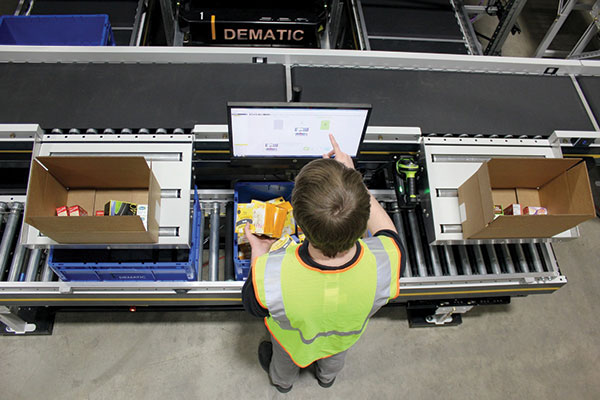
“The vision technology allows the system to sense and identify the contact points of that irregular item, like an automotive muffler, to know just how to sort it,” says Gavenas. “The vision technology we’ve developed and that divert module are where the magic happens.”
Vision technology is also useful to process what are known as “micros,” small items just a few inches in size where the label is nearly as large as the item, says Gavenas. Various mechanisms can be used to handle these micro-parcels, adds Gavenas, including robotic arms and gantries, with vision technology and software being the key to sensing the shape of each item and the best touch points for handling them.
While some sorters can handle a broader range of package types, it’s not yet the case that one type of sorter or conveyor system can handle every possible package size, weight and permutation, Gavenas says. More can be automated today due to advances in vision and software, but it may take more than one type of sorter or robotic sorting solution, and two or three “streams” of automation.
A flexible system should be capable of processing a broad spectrum of package types, shapes and weights as well as enable future expansion or reconfiguration, says David Campbell, a senior account executive with Wynright Corp., part of the Daifuku Group, which provides materials handling systems, including sortation.
For example, says Campbell, the latest generation of Wynright’s high-speed sliding shoe sorter, the AS-35, was improved to handle a broader product range, including polybags, totes and cartons, including larger cartons with dimensions of up to 48 x 72 x 36 inches.
Another key aspect of flexibility—ease of accommodating change—comes down to the modularity the vendor has designed into the hardware, as well as the ease of use of the control system, says Campbell.
The AS-35 uses extruded aluminum construction with no weldments making it easier to expand, adjust and add divert locations, Campbell says, while the programmable logic controller (PLC) platform Wynright uses supports automatic calibration routines. “It’s extremely important to our clients to be able to easily adjust their sortation system to stay current with operation requirements,” he says.
Support role for GTP
Generally, says Campbell, sorters are used in DCs for receiving, routing and shipping. Additionally, sortation and conveyance are sometimes used to support automation such as AMRs or robotic GTP solutions. These systems require timely and frequent replenishment of product to maximize productivity, notes Campbell.
“Today, we’re leveraging conveyance and sortation along with our warehouse execution system (WES) to maximize performance of higher-level automation,” says Campbell. “Integrating convey and sort with technologies such as automated storage and retrieval systems (AS/RS), automatic guided vehicles (AGVs), AMRs, GTP solutions, and robotic piece picking allows us to maximize return on investment for our clients.”
According to Savoye’s Cairns, some overlap exists between what AMRs can do and more traditional conveyor and sortation, especially for applications with relatively lower throughput. But on the whole, conveyor and sortation play a support role for robotics and GTP solutions, in terms of routing goods to a GTP system or transporting completed totes or shippable containers to downstream processes. He agrees that WES-level software functionality is crucial for managing and sequencing the flow of goods in DCs that might have multiple zones of automation, with conveyor and sortation often playing a role in this flow of goods and work to robotic solutions.
If an application is relatively low throughput with a strong need for flexibility, it may be the AMRs can be the main solution, adds Cairns. “If you need that day-to-day flexibility, and the product needing to be handled is changing frequently, [AMRs] can be a really good fit,” he says. “They also fit well in situations with significant space constraints, because with fixed automation, the system consumes space, and that space is utilized all the time.”
Fixed conveyor and sortation, however, has become more modular and easier to expand, and has more capable PLC platforms that make new system modules easier to configure. Today’s PLCs can also incorporate acceleration parameters and other settings that make conveyor more energy efficient.
AMRs may be the ultimate in flexibility, in that their routes and destinations can be adapted with fleet software. But everyone is after flexibility, whether it’s from AMRs or more conventional systems.
The Covid-19 pandemic has heightened the importance of flexibility with conveyor and sortation, notes Dan Barrera, segment manager with Carter Intralogistics, in that an operation may need to reconfigure material flow to support social distancing, as well as to accommodate e-commerce growth or new processes brought about by changing volumes or SKUs.
“Covid was an eye opener, in terms of the need to be flexible about layout and material flows,” says Barrera. “It showed us that you don’t necessarily want to have conveyor that is hard bolted to the floor. For some applications, you want a system that is highly flexible, that has wheels, and that can easily reach and extend into new areas.”
To address this need, Carter offers a product called CarterFlex, which is an expandable, mobile, motor-driven roller (MDR) conveyor mounted on locking casters. Carter Flex is designed for multiple units to interconnect, while the power and controls can be bused from one main control panel and power supply to up to three other units.
This design matches well with rapidly changing flows in receiving or shipping, or to provide materials transport for new processes that need to be rapidly stood up in other parts of an operation, says Barrera.
“Many factors determine where a particular operation needs that flexibility,” says Barrera. “With modular, expandable conveyor that is on wheels, you can rapidly reshape your flow when and where you need to.”
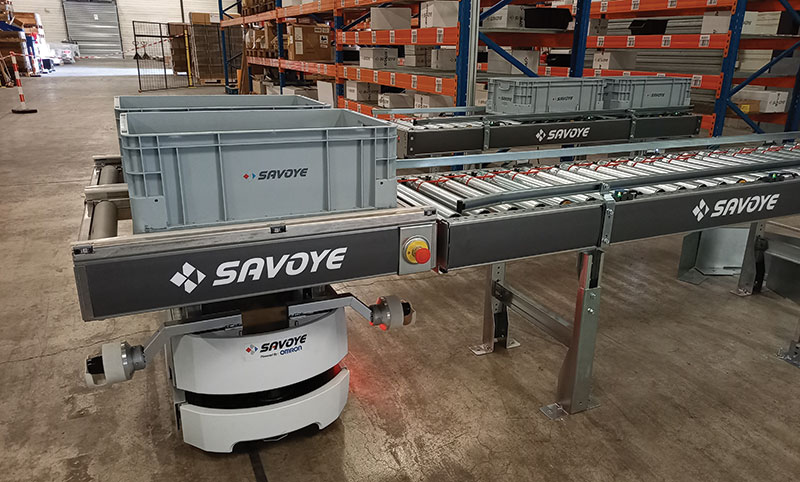
Digital efficiencies
Besides the need for flexibility, operations want digitized systems that can provide benefits like improved maintenance and energy savings, says Barrera. “Everyone is after digitization, meaning systems that are easy to get information from for decision making, to help identify bottlenecks, or to identify when a system is about ready to break. You may still have to take a system down to service it, but it’s better to do that in a controlled manner.”
Today’s conveyor and sortation is more capable than the systems of the past, notes Dematic’s Mart, but AMRs and GTP systems also have their place in what can be thought of as a “hybrid” approach to automation that blends traditional automation with robotics. A key enabler for this approach, Mart adds, is software at the warehouse management system (WMS) and WES levels to govern smart order release and manage material flow and inventory transactions for the mix of solutions in place—whether its conventional conveyor or sortation, mobile robots, or shuttles or other GTP solutions.
“From a software and solutions perspective, that is where Dematic is now playing, in that we have full software stack needed to manage all the warehouse resources and systems, so that you can connect all these dots so that they work together well,” says Mart.
Mart adds that the need remains strong for fixed conveyor and sortation as high-speed conduits for the mix of automation a company puts in place.
“Conventional sortation is here to stay and going strong,” says Mart. “Especially for larger facilities that have intensive throughput requirements, we’re seeing strong demand for systems like our high-speed sliding shoe sorters. These are just highly effectively blocks of automation that remain absolutely critical for many of these facilities.

Article Topics
Conveyors News & Resources
2024 Intralogistics Robotics Survey: Robot demand surges Problem Solved: How a Fulfillment Center Got Back on Track Coesia acquires AMC, LLC Power Transmission: From horseback to rocket ship Regal Rexnord to sell its Industrial Motors & Generators businesses to WEG Van Meter: Saving space while increasing throughput Van Meter optimizes with vertical lift modules (VLMs) More ConveyorsLatest in Materials Handling
Beckhoff USA opens new office in Austin, Texas Manhattan Associates selects TeamViewer as partner for warehouse vision picking ASME Foundation wins grant for technical workforce development The (Not So) Secret Weapons: How Key Cabinets and Asset Management Lockers Are Changing Supply Chain Operations MODEX C-Suite Interview with Harold Vanasse: The perfect blend of automation and sustainability Consultant and industry leader John M. Hill passes on at age 86 Registration open for Pack Expo International 2024 More Materials HandlingAbout the Author
Subscribe to Materials Handling Magazine

Find out what the world's most innovative companies are doing to improve productivity in their plants and distribution centers.
Start your FREE subscription today.
April 2024 Modern Materials Handling

Latest Resources


